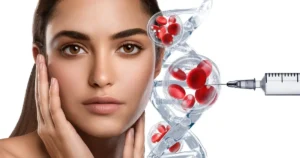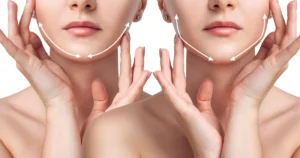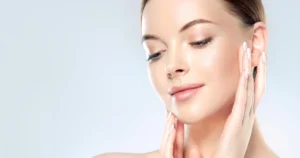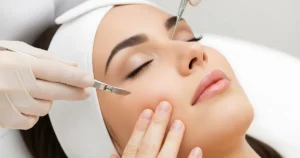The cosmetic industry is a $135 billion industry that constantly looks for innovations. This industry has been using botanicals for centuries, and it’s only recent history that scientists have begun to explore them in more depth. However, one antique method is old but still used in modern cosmetics and medicine, and that is neurotoxins.
Neurotoxins are harmful to humans and animals, but they are used in cosmetic products like lipsticks and foundations. Neurotoxins can be found in some of the most popular brands, such as L’Oreal, CoverGirl, Clinique, Lancome, Estee Lauder, and many more.
If neurotoxins are harmful, why are they in cosmetic products, treatments, and even the medical field? If you want to learn everything about neurotoxins and their applications, simply continue reading the article.
What Are Neurotoxins?
Neurotoxins are chemicals that can penetrate the blood-brain barrier and affect brain function. They can cause damage to the brain and nervous system. You can find them in many different species of plants, animals, insects, and foods. Neurotoxins have been used for centuries to kill or incapacitate people or animals so that they cannot fight back.
They are found in nature but can be produced synthetically as well. They can affect the central nervous system, peripheral nervous system, autonomic nervous system, or neuromuscular junction. Neurotoxins can either be self-administered or come from an external source such as a plant or animal venom.
Some of the most commonly known neurotoxins include mercury (found in some types of fish), lead (found in paint), arsenic (found in many pesticides), cyanide (found in some fruits), botulism toxin (found in food that is not adequately canned) and tetanus toxin (bacteria).
Why Use Neurotoxins in Medical Field?
Neurotoxins are very dangerous if you accidentally intake them. They can cause severe health problems, cognitive impairment, and even death. There are many different neurotoxins out there, but they all have one thing in common—they work by interfering with the nervous system.
Why are we using neurotoxins in cosmetics and the medical field if they are so dangerous?
Neurotoxins have been used in the medical field for many years now. There are many reasons why they are so popular and widely used. The most important one is that they can be very effective when treating or handling certain diseases and conditions, such as Parkinson’s disease.
Many people believe that neurotoxins should not be used because they can cause serious side effects, such as paralysis or even death. However, some people think that the benefits outweigh the risks of using neurotoxins in medicine.
Neurotoxins are not dangerous if handled and used correctly. They are just a part of the natural world that we should not fear but understand and use their properties to make progress in modern medicine.
Neurotoxins In Cosmetics
The use of neurotoxins in cosmetics is not a new phenomenon, but it has received increased attention in recent years. The most well-known neurotoxin used in cosmetics is the botulinum toxin.
Botulinum toxin is the most well-known neurotoxin used in cosmetics. It is a protein that can cause paralysis by blocking nerve cells from releasing acetylcholine, a neurotransmitter.
Botulinum toxin works by causing the muscles to weaken, which reduces wrinkles and gives a person a younger look. It also helps people with migraine headaches and asthma.
Botulinum toxin has been around for about 200 years, but it wasn’t until now that people started using it on their faces to look better. The botulinum toxin was first used as an alternative treatment for migraines and asthma patients. Later on, cosmetic surgeons started using it on their patients who wanted to reduce wrinkles around their eyes or mouths.
Why Use Botulinum Toxin?
Botulinum toxin is a neurotoxin that can positively affect the appearance of wrinkles and fine lines. It is also used to reduce excessive sweating and, in some cases, to control muscle spasms.
Botulinum toxin injections are often used in the cosmetic industry because they are safe and effective for reducing the appearance of wrinkles, crow’s feet, and other signs of aging. On top of that, they are the most long-lasting neurotoxin. Other neurotoxins would’ve just faded away quickly after application.
Treatments That Use Botulinum Toxin
Neurotoxins are used in cosmetic treatments such as Botox and Dysport to reduce wrinkles temporarily. These neurotoxins are injected into the skin to paralyze muscles that cause wrinkles.
Botox
Botox is a type of neurotoxin that is often used for cosmetic purposes. It can be injected into the forehead, frown line, and crow’s feet area to remove wrinkles. This treatment is often blended with other treatments such as laser resurfacing or chemical peels.
Likewise, Botox has also been used to treat spasms of the vocal cords and other conditions like chronic migraines or excessive sweating.
Dysport
Dysport is a neurotoxin that works similarly to Botox, but it has some differences. It takes longer to take effect than Botox, but it lasts longer as well—up to six months instead of three or four months with Botox injections. Dysport can also be injected into specific areas such as the neck or forehead.
Xeomin
Lastly, Xeomin is a botulinum toxin type A, marketed as an alternative to Botox for cosmetic use. The U.S. FDA approved it in 2005. It can be used for similar indications as Botox, such as temporarily improving the appearance of moderate to severe frown lines between the eyebrows (glabellar lines).
What To Expect In Botox, Dysport, And Xeomin Treatments ?
Botox, Dysport, and Xeomin are all injections that can be administered to different face areas.
Botox is predominantly used for the treatment of wrinkles and lines in the forehead, between the eyebrows (glabellar lines), around the eyes (crow’s feet), and at the corners of the mouth (smoker’s lines). Dysport is mainly used for treating wrinkles on the forehead and around the eyes. Xeomin is also mainly used in treating wrinkles in between eyebrows or crow’s feet.
The injections are done through a needle inserted into specific areas of the skin on your face. The injections shouldn’t hurt much, but your provider can apply some topical anesthetics or numbing creams to make it comfortable for you.
Takeaway
Neurotoxins have many medical and cosmetic applications. As long as they are correctly applied, they are by no means dangerous, as proved by millions of people who experienced Botox. If you are interested in cosmetic treatments, make sure to reach out to our clinic Ella Medical Aesthetics. Sally and her team of expert aestheticians are very welcoming, and they offer various services that can accommodate your cosmetic needs and goals.







